Effective Reading Strategies for Students of All Grades
Effective Reading Strategies for Students of All Grades
Helping students become confident, capable readers doesn’t happen overnight. It’s a process that involves more than just handing them a book. It takes intention, consistent support, and the use of strategies that actually work. Whether you're teaching a first grader how to sound out new words, or guiding a high schooler through a dense reading assignment, the goal is the same: to help them move beyond simply decoding text and toward real, meaningful understanding.
The right reading strategies for students can make all the difference. From grasping the main idea of a paragraph to making sense of unfamiliar vocabulary, students need tools that help them slow down, ask the right questions, and think more deeply about what they read. These are not just techniques—they are literacy strategies that empower learners to improve reading skills in a way that is lasting and impactful. In this post, we will walk through a collection of strategies designed for students of all grades, strategies that don’t just improve reading comprehension, but also build lifelong literacy skills they will use well beyond the classroom.
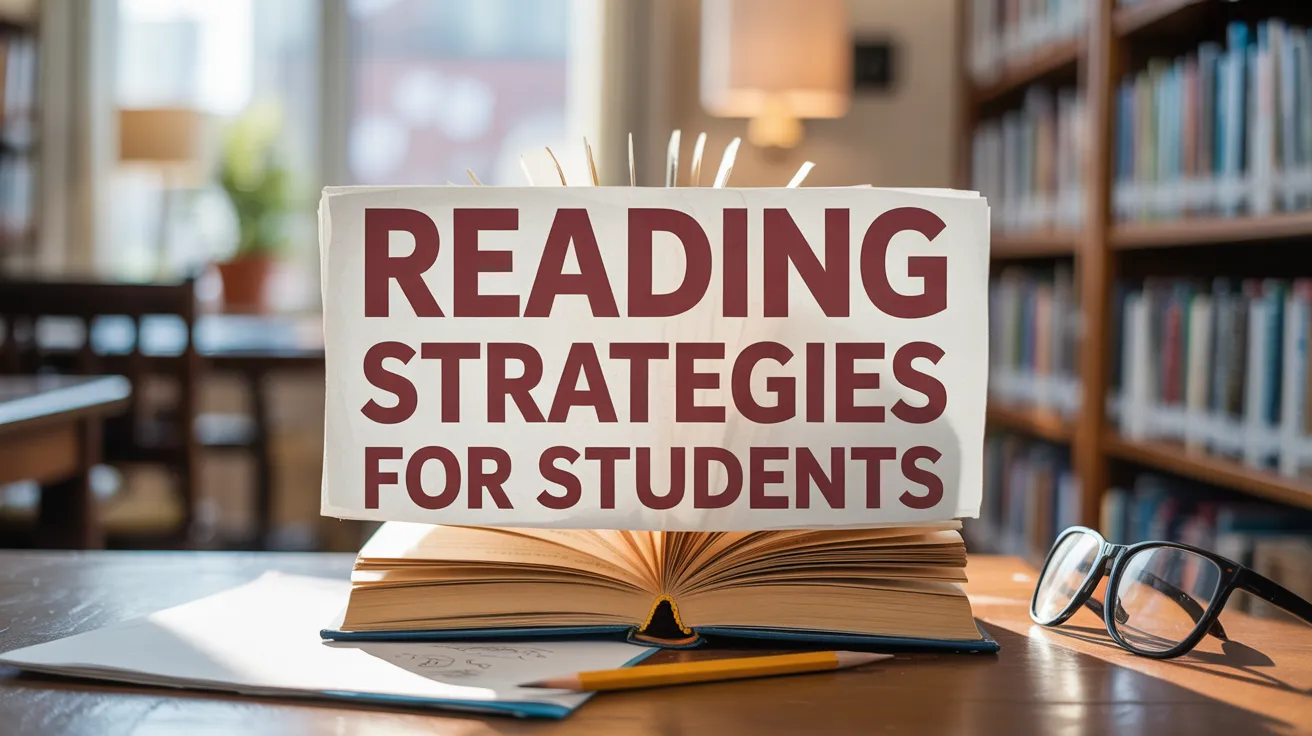
What are Reading Strategies?
Reading strategies are specific techniques that readers use before, during, and after reading to improve reading skills and understanding. These strategies are especially helpful for struggling readers, but they benefit all students by teaching them how to interact with the text instead of just reading passively.
Whether it's previewing a passage, using graphic organizers, or asking questions, reading strategies for students support a student’s ability to stay engaged, understand key ideas, and retain content in their long term memory. Here's why they matter:
Enhance reading comprehension skills and retention
Improve understanding of unfamiliar words and concepts
Promote critical thinking, reflection, and curiosity
Support success in all subjects, not just English
Help students become independent, strategic readers
These strategies create confident learners who don’t just read but understand, analyze, and apply what they learn. They are:
Read Aloud with Expression
Reading aloud isn’t just for younger students. It’s one of the most effective reading strategies ways to build fluency and boost phonemic awareness. It helps struggling readers improve reading skills by recognize new words, improves pronunciation, and strengthens pacing and phrasing, all of which support overall comprehension. Its benefit includes:
Encourages active reading
Supports auditory learners
Reinforces sentence structure and tone
Helps with recognizing unfamiliar vocabulary and key words
For younger readers, reading aloud with enthusiasm makes stories engaging and easier to follow. For older students, it helps build public speaking confidence and encourages reading with expression and intent.
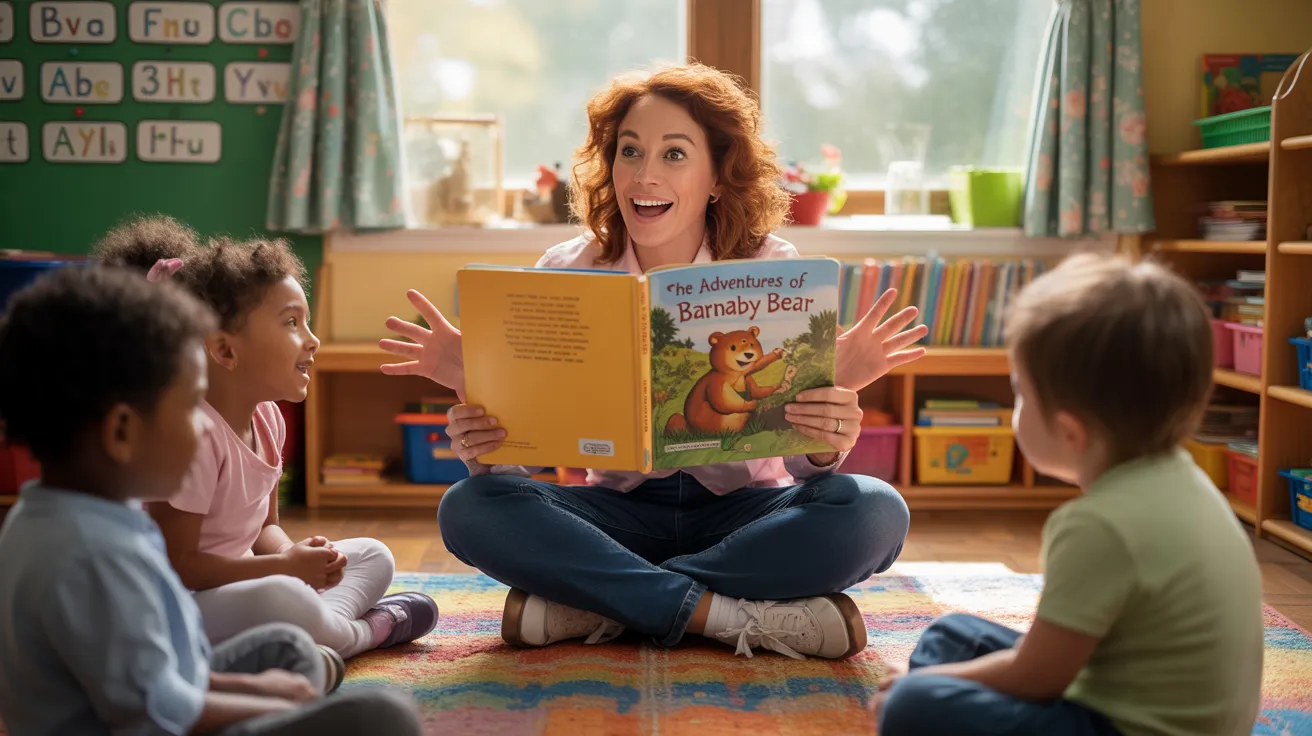
Set a Purpose for Reading Strategies
One of the most important reading strategies is to set a clear purpose before beginning a text. Are students reading to learn, to explore an opinion, or to gather facts for a project? It:
Directs attention to the main idea and key details
Keeps students focused during a reading assignment
Reduces distractions and supports active reading strategies
Reinforces goal-setting in learning
When students understand why they are reading, they are more likely to engage fully, retain key ideas, and write questions that guide deeper thinking.
Schema
Schema refers to the information and experiences students already have. Tapping into this prior knowledge helps them make connections between what they know and what they are reading, especially when encountering unfamiliar vocabulary or concepts. It:
Encourage students to discuss what they already know before reading
Use the opening paragraphs to make predictions
Have students write or draw how the new topic connects to something familiar
When students can link new content to their own words and experiences, comprehension improves and so does their interest in learning.
Stimulate Visual Learning
Visual representations are highly effective for students of all grades. Tools like story maps, flow charts, and graphic organizers help students break down information into digestible parts. They:
Make abstract ideas more tangible
Help students read and retain complex information
Support multi-sensory and visual learners
Organize main points, supporting details, and opposing views
Teachers can use color-coded diagrams, character charts, or digital mind maps to improve reading comprehension and make learning more interactive.
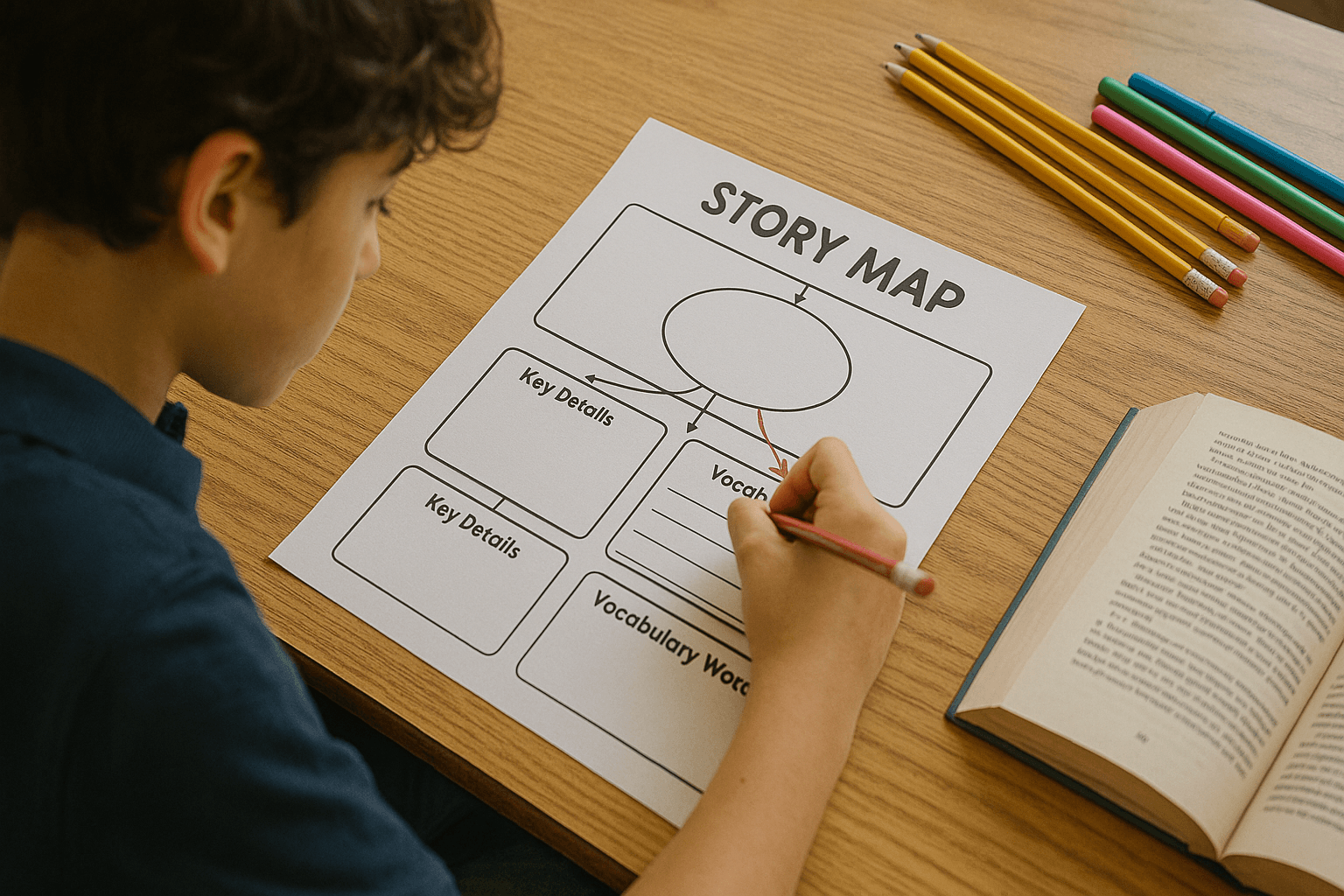
Ask and Answer Questions
One of the most active reading strategies is encouraging students to write questions before, during, and after reading. It turns reading into a dialogue, keeping students curious and involved. It:
Builds reasoning and inference skills
Teaches students to seek out important information
Reinforces understanding of the main concepts and key details
Encourage students to ask:
“What do I already know?”
“What do I think will happen next?”
“What was the main idea of that paragraph?”
This questioning process encourages students to become thoughtful readers, not passive observers.
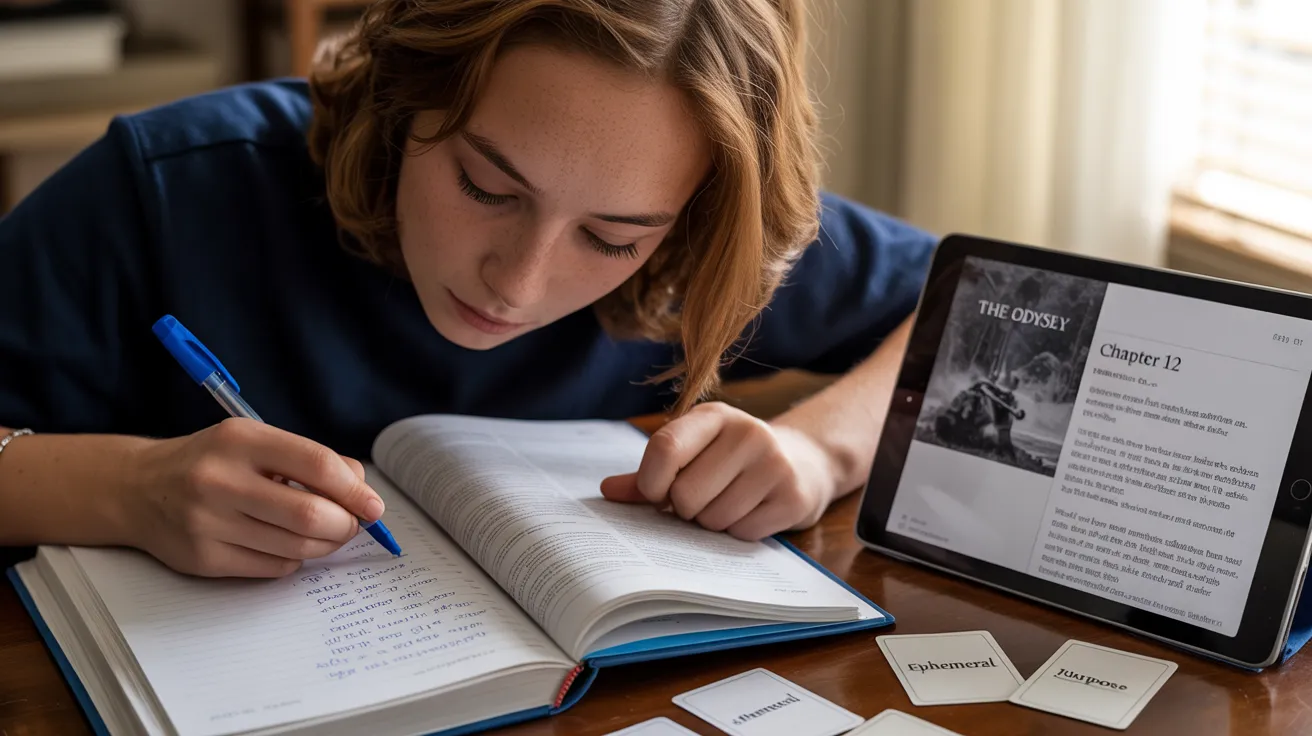
Introduce Variety
Many students lose interest in reading when the content feels repetitive. That's why introducing a mix of different types of reading material- fiction, non-fiction, news, poetry, graphic novels, is one of the most effective ways reading strategies that to boosts engagement. It:
Supports diverse learning styles and interests
Introduces new vocabulary and sentence structures
Prepares students for various academic reading tasks
Encourages exploration of new concepts and genres
Letting students choose books or passages empowers them, while exposing them to unfamiliar words and ideas broadens their perspective.
Self Check – Reading a Book
Teaching students to pause and reflect “Did I understand what I just read?” is key to developing metacognitive skills. This reading strategy allows students to monitor their own learning and identify when they need to go back and reread. It:
Promotes long term memory of key concepts
Helps students notice unknown words or confusing passages
Encourages accountability and a sense of control over learning
Reinforces comprehension strategies
Reflection turns reading into a learning process, not just a task to complete.
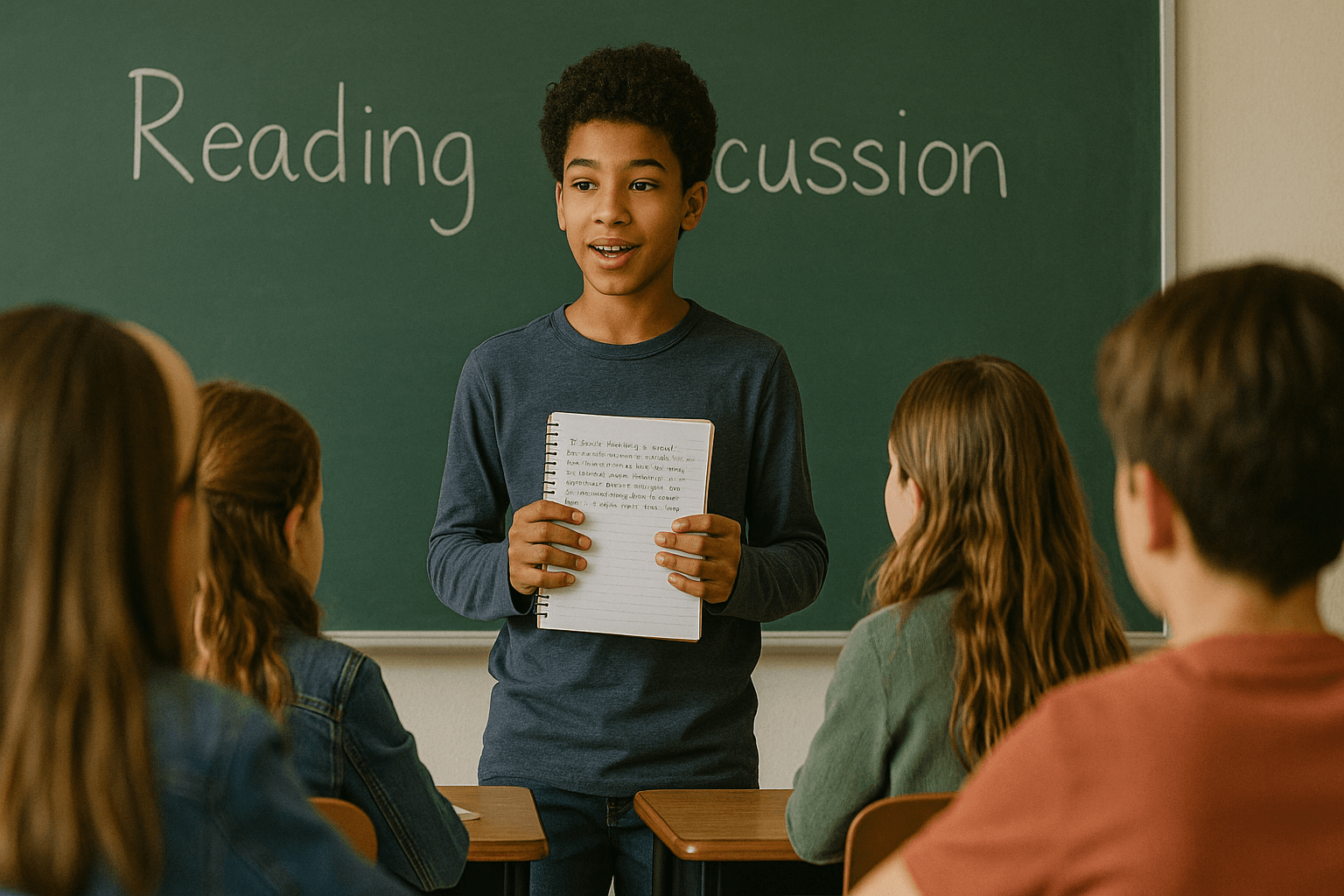
Focus on Core Skills
No matter the grade level, students need to build on the four pillars of literacy: phonics, fluency, vocabulary, and comprehension. These are the foundational reading strategies that support every student, from younger readers learning to decode, to college students analyzing texts.
Practice decoding with phonemic awareness exercises
Read aloud regularly to improve fluency
Introduce new words in context to improve vocabulary
Use graphic organizers and reflection for deeper comprehension
By reinforcing these core skills, we create stronger readers and more capable learners in every subject.
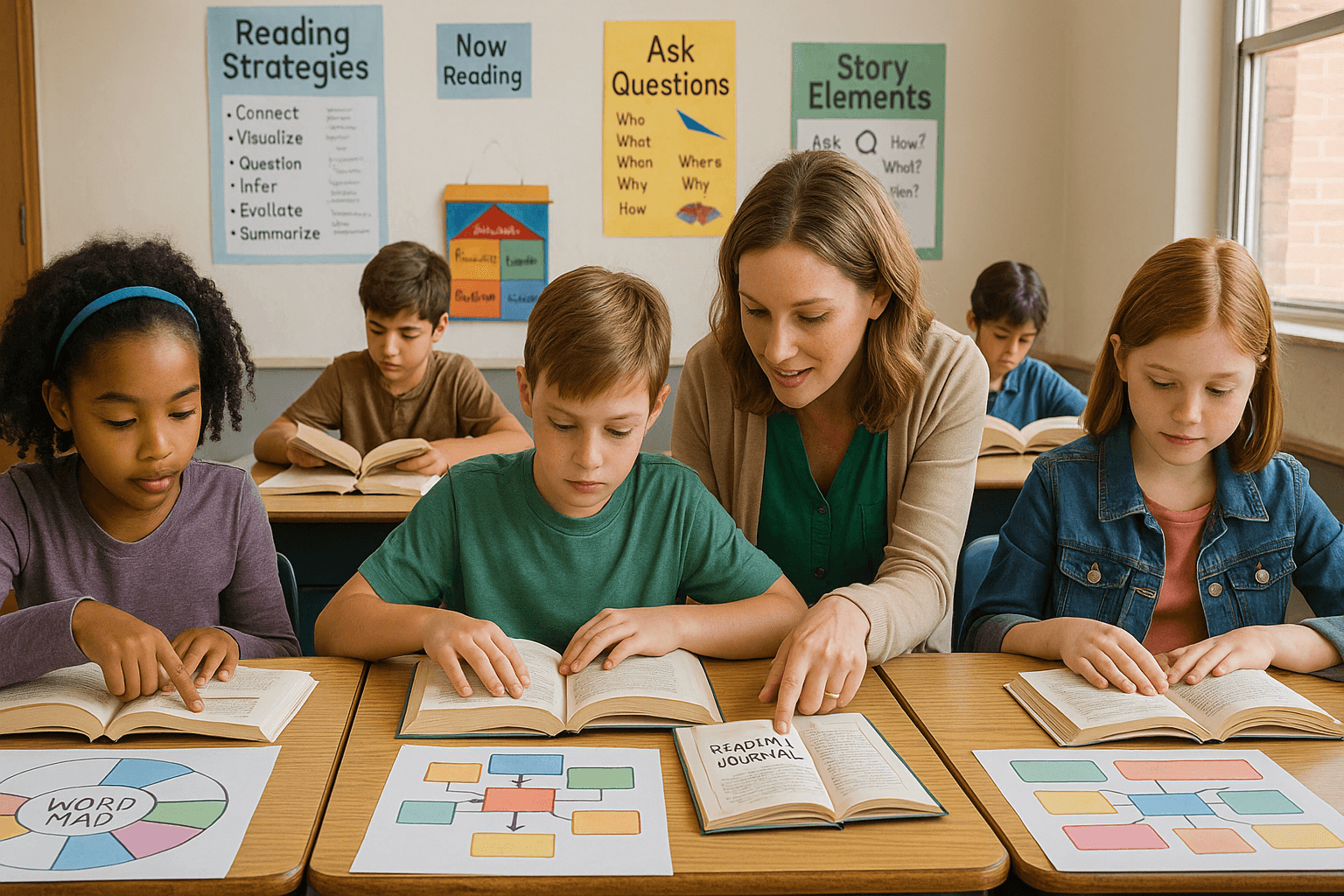
Make Reading Fun
For some students, reading can feel like a chore. That’s why it’s essential to make reading enjoyable through games, interactive activities, and friendly challenges. You can:
Host reading challenges with rewards
Use roleplay and storytelling games
Create group reading circles
Let students present summaries in their own words
When reading is fun, students build a positive relationship with it, and that’s what encourages long-term success and literacy skills.
Pre-Reading Activities to Prepare Your Child for Reading
What happens before reading matters just as much as the reading itself. Pre-reading strategies activate schema, reduce anxiety, and help students prepare mentally for what they’re about to learn. Examples:
Preview titles, headings, and the first sentence
Predict what might happen in the story
Introduce and discuss unfamiliar vocabulary or key phrases
These small steps build confidence, focus, and anticipation, especially for struggling readers or those tackling a challenging reading assignment.
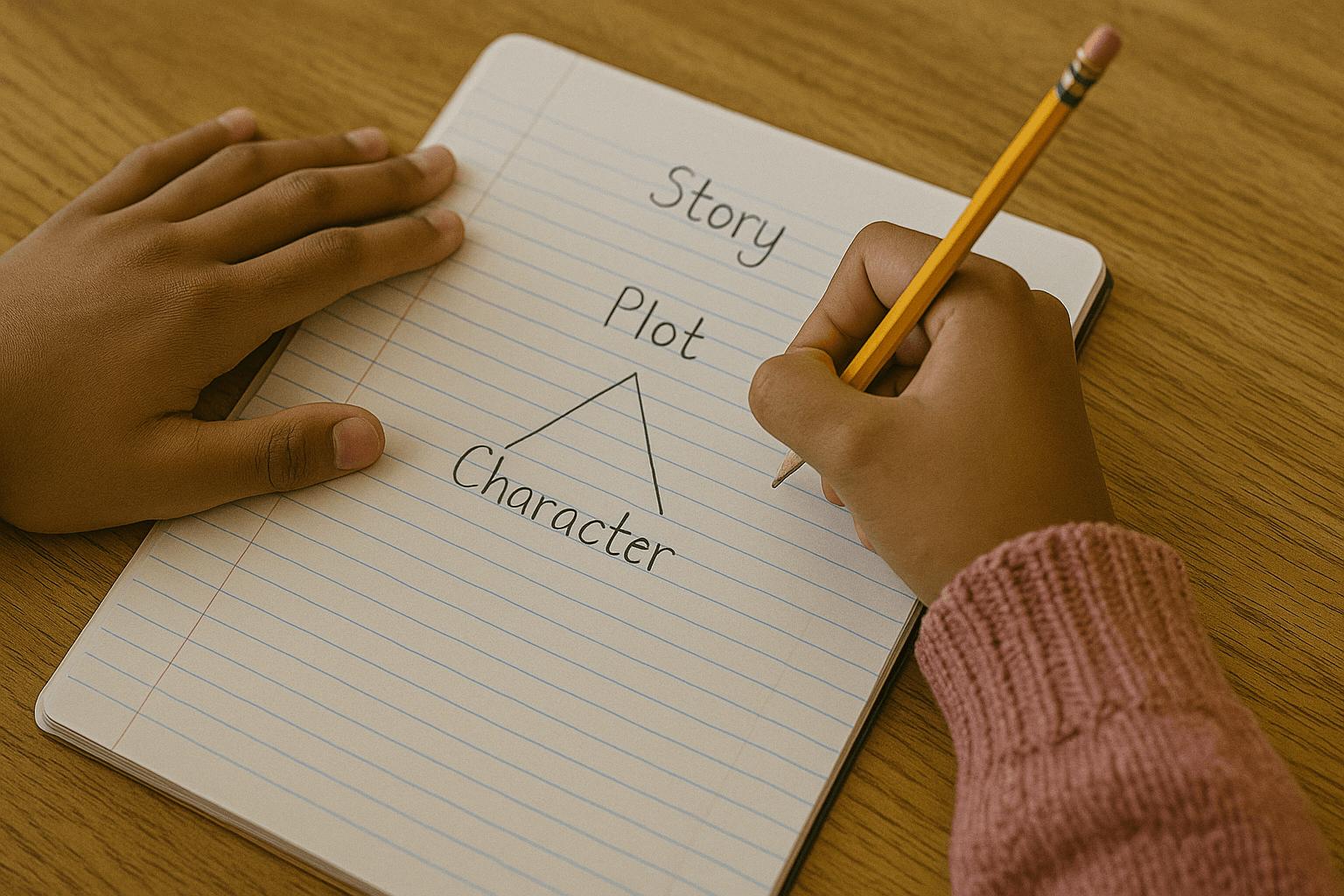
Benefits of Using Reading Strategies
So why do these reading strategies really matter? The answer goes far beyond just finishing a book or passing a test. When students are given the right tools to read actively, make sense of key concepts, and navigate through unknown words, something important happens, they begin to trust their own thinking.
With reading skills and strategies in place, students are no longer just reading for the sake of it. They’re making connections, identifying main ideas, understanding meaning beyond what's explicitly stated, and developing the kind of comprehension skills that apply in every subject. That’s when real growth starts. These literacy strategies:
Boosts test scores and academic achievement
Supports success in all subjects and grade levels
Prepares students for higher education and careers
Promotes lifelong learning and curiosity
Encourages students to think, reflect, and write clearly
By teaching these reading strategies early and encouraging students to practice them regularly, we help them build confidence, tackle challenging texts, and become engaged learners who aren’t afraid to dive deeper. With the right approach, every student regardless of age or reading level, can become a motivated, capable reader.
Conclusion
Strong reading skills don’t develop overnight, and they certainly don’t come from memorizing rules or rushing through chapters. Real progress happens when students slow down, think about what they’re reading, and make sense of it in their own words. It’s less about how fast a student can get through a book, and more about how deeply they understand the main ideas, ask questions, and connect what they read to what they already know.
These reading strategies, whether it’s reading aloud, using graphic organizers, or taking time to reflect, are meant to support every kind of learner. Some students will breeze through stories but struggle with comprehension; others might find reading intimidating altogether. But with encouragement, the right tools, and steady practice using effective reading strategies for students, even the most struggling readers can improve, grow, and begin to enjoy the process.
At the end of the day, reading isn’t just for school, it’s a lifelong skill. When students learn how to approach a text thoughtfully and apply these reading skills and strategies consistently, they are not just getting better at reading, they are learning how to understand, how to think, and how to keep learning in every subject they encounter.
Reading Strategies - FAQs
How can strategies for reading be improved?
To improve reading strategies, students should combine consistent practice with methods like questioning, summarizing, and using graphic organizers. Reflecting on what they read, recognizing main ideas, and breaking down complex passages into key points are all practical ways to build confidence. Support from teachers and academic coaches can also reinforce these strategies over time.
Which reading strategies improve focus and comprehension in students?
Some of the most effective reading strategies for students include setting a purpose, activating prior knowledge, asking questions during reading, and creating visual representations. These literacy strategies keep students focused, help them understand the main concepts, and improve their ability to retain and apply what they learn in real-world situations.
Can digital tools and apps support effective reading?
Absolutely. Audiobooks, annotation apps, and interactive eBooks offer engaging ways to practice reading comprehension strategies. These reading skills and strategies can help students build vocabulary, track unknown words, and practice active reading especially useful for struggling readers or those who prefer digital learning environments.
How does reading fluency affect learning outcomes?
Fluent readers can process information faster, read with proper tone and pace, and grasp key ideas more easily. This fluency improves their comprehension and allows them to focus on analysis and critical thinking, rather than just decoding text. In turn, they tend to perform better in both classroom discussions and written assessments.
What reading practices support students with learning difficulties?
For students with challenges, multi-sensory learning, chunking text into manageable parts, reading aloud, and repeated practice are highly effective. Teachers can also use visual aids, graphic organizers, and frequent review of new vocabulary to build confidence. These strategies give struggling readers the structure and support they need to succeed.
Comments
Your comment has been submitted successfully!